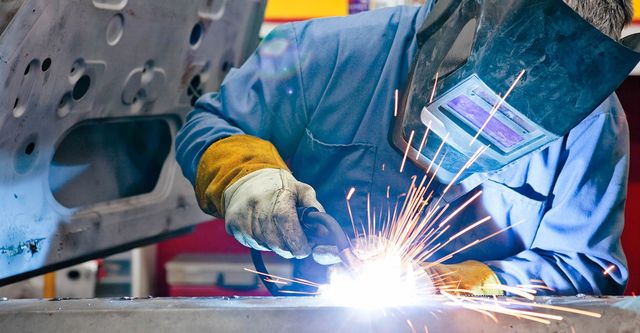The Importance Of Welding Safety

What are the safety risks of welding?
Welding can be dangerous, leading to burns, electric shocks and explosions.
Poorly maintained electrical equipment, personal protective equipment and welding conditions can all lead to safety risks. Toxic gas inhalation and wet welding are particular dangers in hazardous areas or when poorly managed. Welders must be aware of the risks of welding and take proper safety precautions. Poor work practices can lead to injuries.
Welding is a dangerous profession. According to the U.S. Bureau of Labor Statistics, there are an estimated 6,000 welding-related deaths every year in the U.S. alone. In addition, more than 40% of all serious workplace injuries and fatalities result from welders’ exposure to welding fumes and arc flashes while they work on construction sites or at industrial facilities.
Welding safety is of utmost importance to ensure that workplace injuries don’t occur.
Eye Damage From Welding
Welding is a process of joining metal objects by heating the base material and forcing it against the workpiece. It's sometimes referred to as brazing, which is often used in gas welding.
There are several different types of eye injuries that can result from welding.
Eye damage from welding is eye damage that could be caused by exposure to ultraviolet light, which comes from the metal flash on a welded object. Welding in general poses health risks due to the heat and the UV light. Eye damage from welding is a very common injury, and it can happen to anyone. Welding fumes in the air can be harmful for your eyes, so make sure you are wearing proper eye protection.
Wearing a high quality welding helmet is one of the most important safety measures whilst welding.
Gasses and fumes
Undertaking welding activities will expose you to invisible gaseous fumes including ozone, nitrogen oxides, chromium and nickel oxides, carbon monoxide which can easily penetrate into your lungs. Depending on the gas or fume, the concentration, and duration of your exposure the resultant damage can be severe.
There is no minimum safe exposure limit for welding fume. Employers are legally required to effectively control exposure to all types of welding fume, including that from mild steel welding.
All organisations carrying out welding activities must ensure effective engineering controls are in place and correctly used to suitably control welding fumes, including when welding outside. Employers must also provide welders with adequate and suitable respiratory protective equipment (RPE), if engineering controls are not sufficient on their own, to control all fume exposure
Welding fumes can cause asthma.
Cancer is a potential side-effect of welding.
Metal fume fever can cause throat and lung irritation.
Burns
Welders are susceptible to severe burns when welding.
The most common reason for a fire is the presence of flammable materials in the working area.
Maintaining the welding area clean decreases the risk of fire.
Welders are susceptible to severe burns when welding. Burns can occur from the heat of the weld, from contact with the molten metal, and from sparks. To prevent burns, welders should wear proper clothing and gear, avoid distractions, and be aware of their surroundings. Burns should be treated as soon as they appear because they can cause scarring, infection, and permanent damage.
Always be sure to know the emergency plan and the location of fire extinguishers in case of a fire.

















